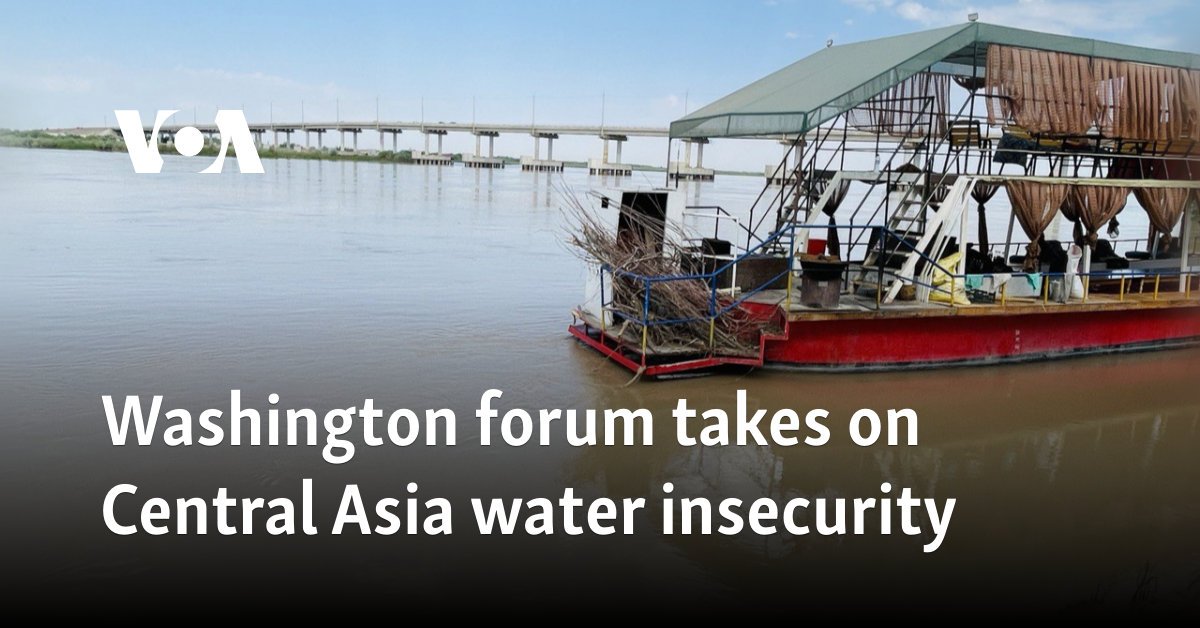Central Asia has a growing population, rising economic demand and severe water shortages that require greater coordination among governments and international aid groups to build out crucially needed water infrastructure, experts on the region say.
“There is no solution to these water problems without political solutions to regional problems involving regional integration to a unique degree,” Wesley Alexander Hill, lead analyst at the International Tax and Investment Center, said last week at an Atlantic Council forum in Washington.
Hill explained that the origins of major rivers in Kazakhstan, Kyrgyzstan, Tajikistan, Uzbekistan and Turkmenistan largely depend on sources in Russia, China and Afghanistan.
He also highlighted China’s Belt and Road Initiative, which has pledged water investments in Kazakhstan, and Afghanistan’s construction of the Qosh Tepa Canal, which threatens to reduce water flow from the Hindu Kush into downstream countries such as Uzbekistan and Turkmenistan.
Central Asian governments over the years have sought water-related agreements with Moscow, Beijing and Kabul.
Hill said that modernizing water infrastructure in these countries presents economic opportunities.
“Investing in Central Asian water infrastructure and resources isn’t a charity project,” he said. “It can actually be quite profitable. There’s plenty of money to be made not just by Chinese and Russian companies, but, hopefully, by American and European companies as well, in areas like relining canals.”
Wilder Alejandro Sanchez, president of Second Floor Strategies, underscored the need for “realistic and rational policy recommendations” to achieve water security in Central Asia.
“We encourage local governments to implement technologies like water-measuring systems, drip irrigation and graywater recycling,” Sanchez told attendees at the forum.
He also called for policymakers to ensure accountability and transparency, given Central Asia’s well-documented record of corruption and embezzlement. He suggested that water security projects be monitored by international auditing agencies to build public trust.
The Atlantic Council panelists also proposed restructuring the region’s Interstate Commission for Water Coordination, created in 1992, into a more effective Central Asia Water Council or permanent administrative office.
The Central Asian governments already have their own initiatives. Tajikistan, for example, leads the Dushanbe Water Process, while Kazakhstan plans to host the Central Asian Water Environmental Summit next year.
Sanchez and his colleagues encouraged the Central Asian republics, whose representatives were at the forum, to work not only with the United States but also with European and Asian partners, including the Netherlands, France, South Korea and Japan.
Sanchez acknowledged that achieving unity and cooperation remains a challenge, given regional geopolitics and domestic priorities.
“Ultimately, no individual Central Asian state can achieve total water security and water independence without cooperating with its neighbors and significantly improving water management,” he said.
For decades, international organizations and researchers have warned about the ecological disaster unfolding in Central Asia, particularly the shrinking of the Aral Sea, which has lost most of its volume since the 1960s. The Caspian Sea, the region’s only remaining major body of water, is also drying up.
Ariel Cohen, a nonresident senior fellow at the Atlantic Council who was also on the panel, pointed to deteriorating infrastructure as a key issue.
“A lot of water is lost because modern irrigation technologies are not used. You still have Soviet-era canals, or even pre-Soviet traditional canals, that are just dug into the ground without any protection from evaporation or dissipation,” Cohen said. “Moving to pipe distribution of water, drip irrigation and sprinklers will probably save 50% of water consumption and move the region toward much more balanced water management.”
The experts estimate that modernization will cost billions of dollars, and the question of where that funding will come from remains open.
“If it’s not going to be the U.S., it’s going to be somebody else. The best-case scenario? If it’s not us [the U.S.], it’s the Europeans. Worst-case scenario? It’s the Chinese,” said Cohen.
It remains to be seen, other analysts listening to the panel said, whether the Trump administration’s “America First” policy would support such involvement.
“Often, when we talk about U.S.-Central Asia relations, we focus on the big picture,” said Sanchez. “We need to diversify engagement between the U.S. and Central Asia.”
Water security and environmental protection are high-impact initiatives, he argued, that will not only strengthen ties but also improve the image of the U.S. in Central Asia.
“We also want the people of Central Asia to see the United States as a friend,” Sanchez said.


